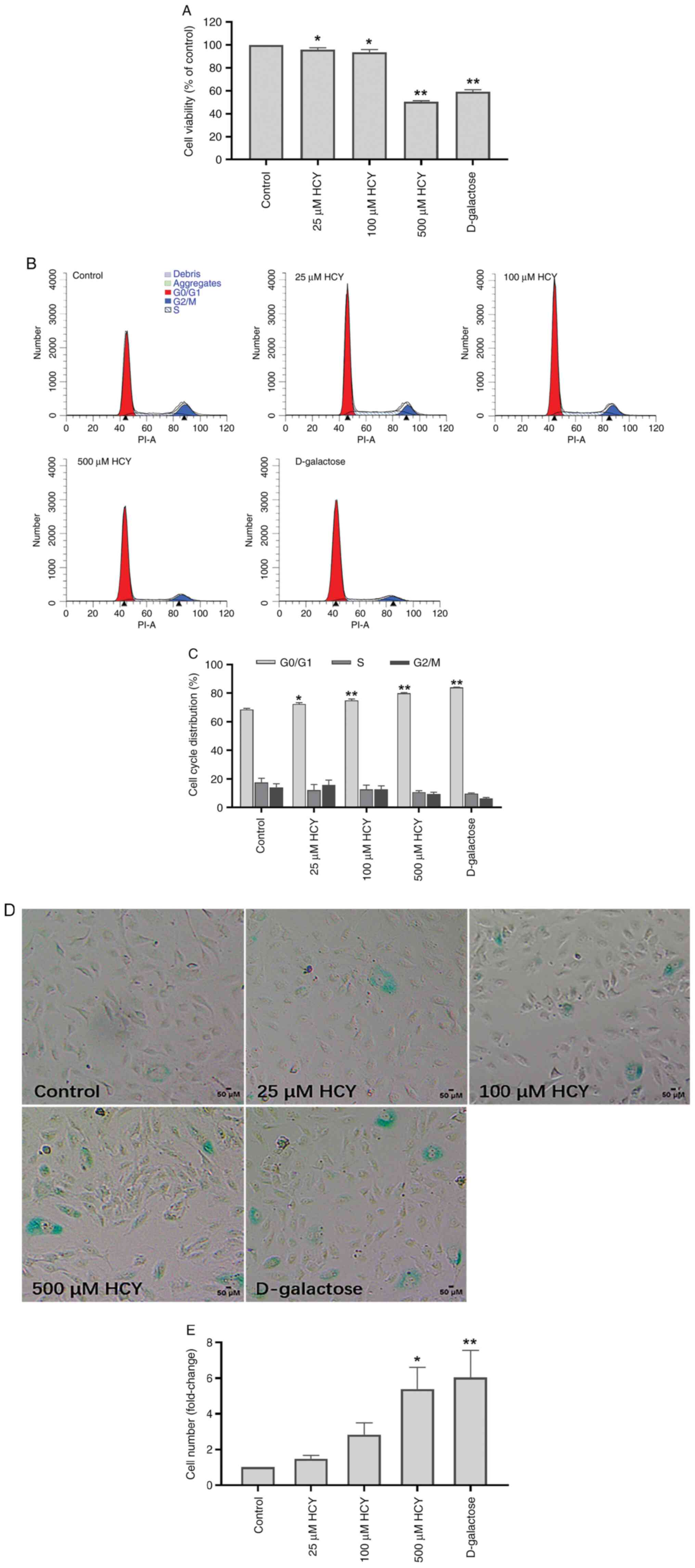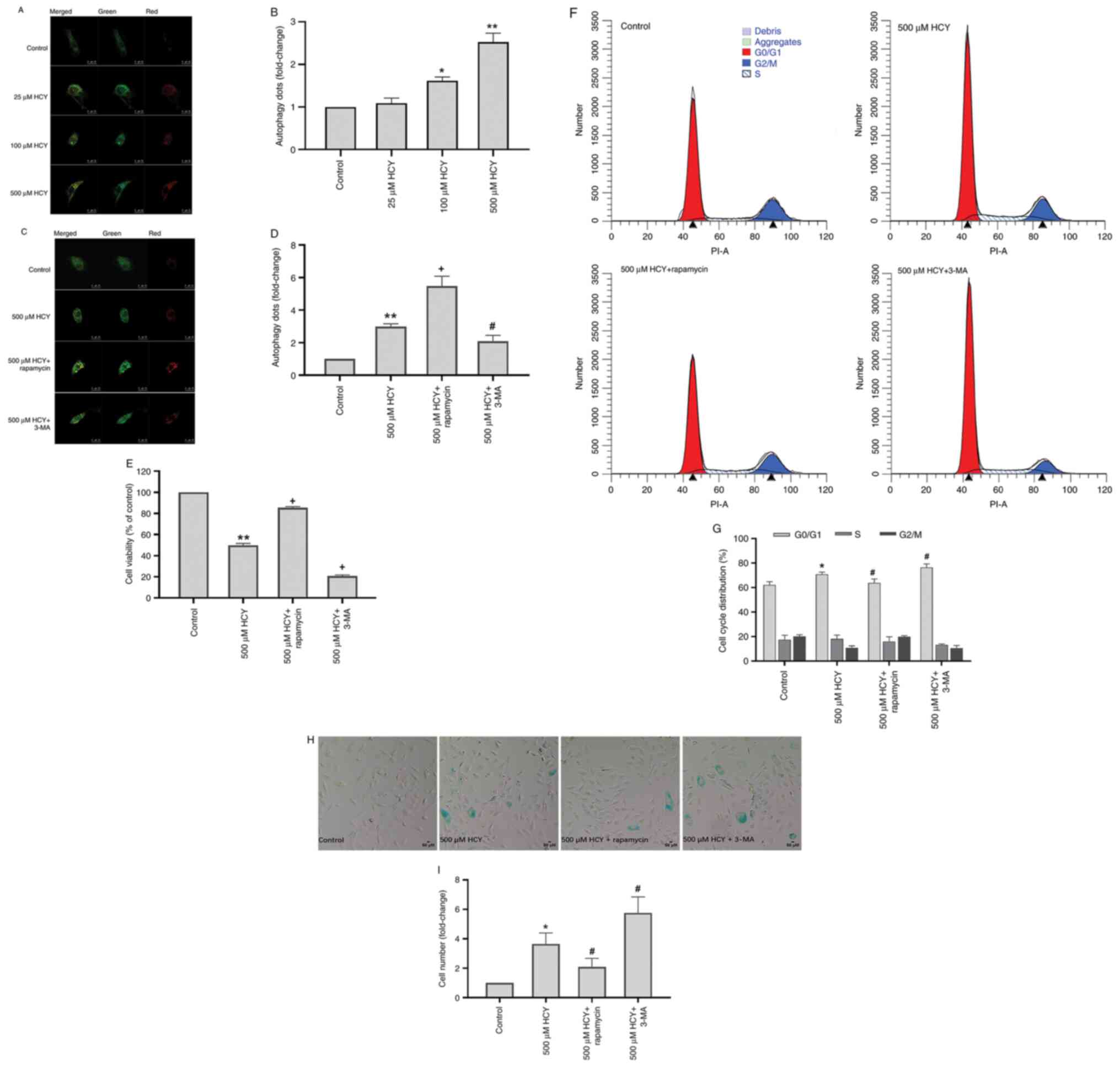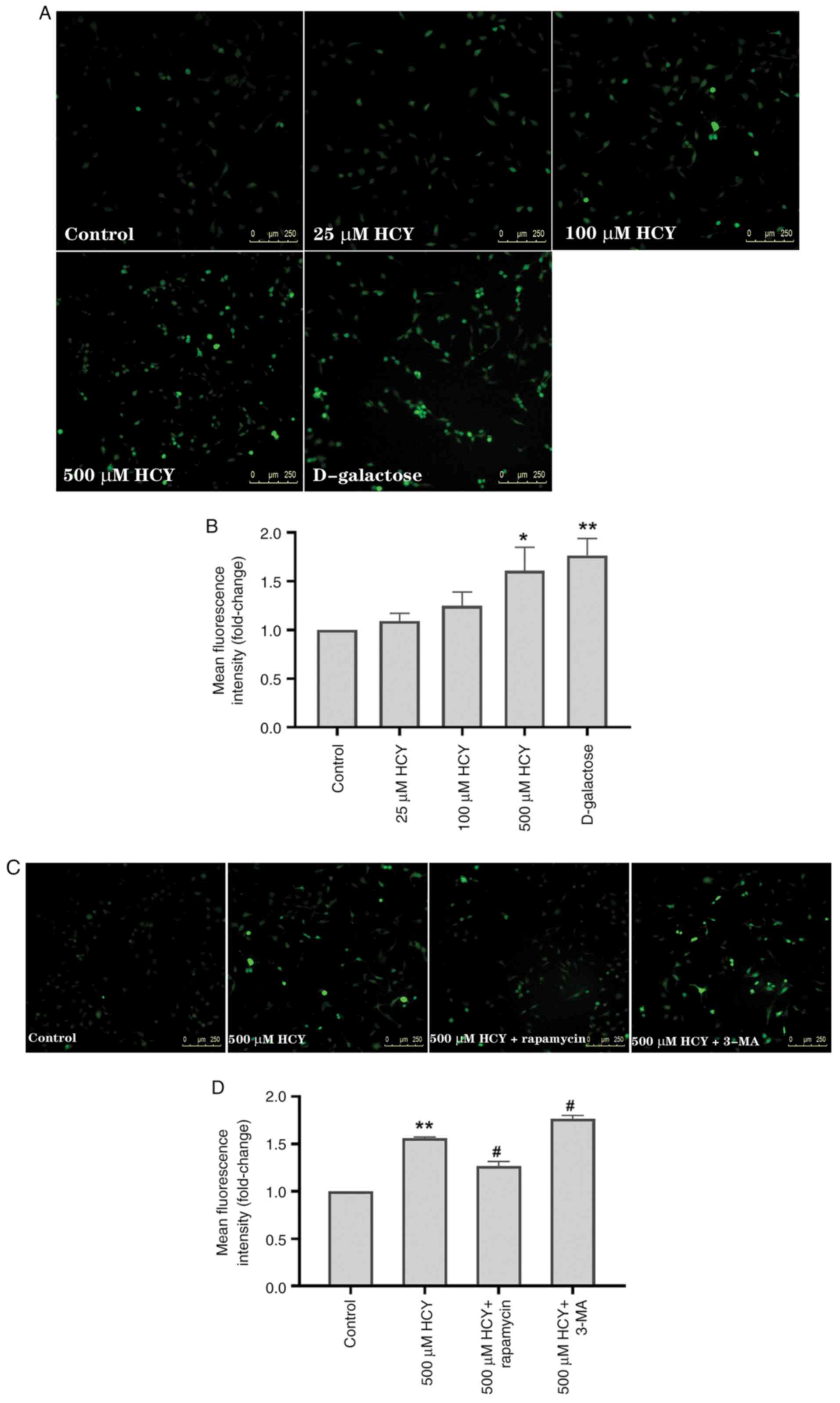|
1
|
Donato AJ, Machin DR and Lesniewski LA:
Mechanisms of dysfunction in the aging vasculature and role in
age-related disease. Circ Res. 123:825–848. 2018.PubMed/NCBI View Article : Google Scholar
|
|
2
|
Ashapkin VV, Kutueva LI and Vanyushin BF:
Aging as an epigenetic phenomenon. Curr Genomics. 18:385–407.
2017.PubMed/NCBI View Article : Google Scholar
|
|
3
|
Lakatta EG and Levy D: Arterial and
cardiac aging: Major shareholders in cardiovascular disease
enterprises: Part I: Aging arteries: A ‘set up’ for vascular
disease. Circulation. 107:139–146. 2003.PubMed/NCBI View Article : Google Scholar
|
|
4
|
Sun C, Diao Q, Lu J, Zhang Z, Wu D, Wang
X, Xie J, Zheng G, Shan Q, Fan S, et al: Purple sweet potato color
attenuated NLRP3 inflammasome by inducing autophagy to delay
endothelial senescence. J Cell Physiol. 234:5926–5939.
2019.PubMed/NCBI View Article : Google Scholar
|
|
5
|
Wang Y, Boerma M and Zhou D: Ionizing
radiation-induced endothelial cell senescence and cardiovascular
diseases. Radiat Res. 186:153–161. 2016.PubMed/NCBI View Article : Google Scholar
|
|
6
|
Moselhy SS and Demerdash SH: Plasma
homocysteine and oxidative stress in cardiovascular disease. Dis
Markers. 19:27–31. 2003.PubMed/NCBI View Article : Google Scholar
|
|
7
|
Scalera F, Martens-Lobenhoffer J, Täger M,
Bukowska A, Lendeckel U and Bode-Böger SM: Effect of L-arginine on
asymmetric dimethylarginine (ADMA) or homocysteine-accelerated
endothelial cell aging. Biochem Biophys Res Commun. 345:1075–1082.
2006.PubMed/NCBI View Article : Google Scholar
|
|
8
|
Zhang D, Sun X, Liu J, Xie X, Cui W and
Zhu Y: Homocysteine accelerates senescence of endothelial cells via
DNA hypomethylation of human telomerase reverse transcriptase.
Arterioscler Thromb Vasc Biol. 35:71–78. 2015.PubMed/NCBI View Article : Google Scholar
|
|
9
|
Wang CJ, Hu CP, Xu KP, Tan GS and Li YJ:
Effects of selaginellin on homocysteine-induced senescence in human
umbilical vein endothelial cells. J Cardiovasc Pharmacol.
55:560–566. 2010.PubMed/NCBI View Article : Google Scholar
|
|
10
|
Sun T, Ghosh AK, Eren M, Miyata T and
Vaughan DE: PAI-1 contributes to homocysteine-induced cellular
senescence. Cell Signal. 64(109394)2019.PubMed/NCBI View Article : Google Scholar
|
|
11
|
Abdellatif M, Sedej S, Carmona-Gutierrez
D, Madeo F and Kroemer G: Autophagy in cardiovascular aging. Circ
Res. 123:803–824. 2018.PubMed/NCBI View Article : Google Scholar
|
|
12
|
Boya P, Reggiori F and Codogno P: Emerging
regulation and functions of autophagy. Nat Cell Biol. 15:713–720.
2013.PubMed/NCBI View
Article : Google Scholar
|
|
13
|
Vion AC, Kheloufi M, Hammoutene A, Poisson
J, Lasselin J, Devue C, Pic I, Dupont N, Busse J, Stark K, et al:
Autophagy is required for endothelial cell alignment and
atheroprotection under physiological blood flow. Proc Natl Acad Sci
USA. 114:E8675–E8684. 2017.PubMed/NCBI View Article : Google Scholar
|
|
14
|
Song S, Wu S, Wang Y, Wang Z, Ye C, Song
R, Song D and Ruan Y: 17β-estradiol inhibits human umbilical
vascular endothelial cell senescence by regulating autophagy via
p53. Exp Gerontol. 114:57–66. 2018.PubMed/NCBI View Article : Google Scholar
|
|
15
|
Zhang JW, Yan R, Tang YS, Guo YZ, Chang Y,
Jing L, Wang YL and Zhang JZ: Hyperhomocysteinemia-induced
autophagy and apoptosis with downregulation of hairy enhancer of
split 1/5 in cortical neurons in mice. Int J Immunopathol
Pharmacol. 30:371–382. 2017.PubMed/NCBI View Article : Google Scholar
|
|
16
|
Wang K, Peng S, Xiong S, Niu A, Xia M,
Xiong X, Zeng G and Huang Q: Naringin inhibits autophagy mediated
by PI3K-Akt-mTOR pathway to ameliorate endothelial cell dysfunction
induced by high glucose/high fat stress. Eur J Pharmacol.
874(173003)2020.PubMed/NCBI View Article : Google Scholar
|
|
17
|
Jiang F: Autophagy in vascular endothelial
cells. Clin Exp Pharmacol Physiol. 43:1021–1028. 2016.PubMed/NCBI View Article : Google Scholar
|
|
18
|
Guo ZX, Zhou FZ, Song W, Yu LL, Yan WJ,
Yin LH, Sang H and Zhang HY: Suppression of microRNA-101 attenuates
hypoxia-induced myocardial H9c2 cell injury by targeting
DIMT1-Sp1/survivin pathway. Eur Rev Med Pharmacol Sci.
22:6965–6976. 2018.PubMed/NCBI View Article : Google Scholar
|
|
19
|
Khayati K, Antikainen H, Bonder EM, Weber
GF, Kruger WD, Jakubowski H and Dobrowolski R: The amino acid
metabolite homocysteine activates mTORC1 to inhibit autophagy and
form abnormal proteins in human neurons and mice. FASEB J.
31:598–609. 2017.PubMed/NCBI View Article : Google Scholar
|
|
20
|
Nakano E, Taiwo FA, Nugent D, Griffiths
HR, Aldred S, Paisi M, Kwok M, Bhatt P, Hill MH, Moat S and Powers
HJ: Downstream effects on human low density lipoprotein of
homocysteine exported from endothelial cells in an in vitro system.
J Lipid Res. 46:484–493. 2005.PubMed/NCBI View Article : Google Scholar
|
|
21
|
Zhou C, Zhong W, Zhou J, Sheng F, Fang Z,
Wei Y, Chen Y, Deng X, Xia B and Lin J: Monitoring autophagic flux
by an improved tandem fluorescent-tagged LC3 (mTagRFP-mWasabi-LC3)
reveals that high-dose rapamycin impairs autophagic flux in cancer
cells. Autophagy. 8:1215–1226. 2012.PubMed/NCBI View Article : Google Scholar
|
|
22
|
Saxena S, Vekaria H, Sullivan PG and
Seifert AW: Connective tissue fibroblasts from highly regenerative
mammals are refractory to ROS-induced cellular senescence. Nat
Commun. 10(4400)2019.PubMed/NCBI View Article : Google Scholar
|
|
23
|
Li L, Tan J, Miao Y, Lei P and Zhang Q:
ROS and autophagy: Interactions and molecular regulatory
mechanisms. Cell Mol Neurobiol. 35:615–621. 2015.PubMed/NCBI View Article : Google Scholar
|
|
24
|
Clarke R, Daly L, Robinson K, Naughten E,
Cahalane S, Fowler B and Graham I: Hyperhomocysteinemia: An
independent risk factor for vascular disease. N Engl J Med.
324:1149–1155. 1991.PubMed/NCBI View Article : Google Scholar
|
|
25
|
Esse R, Barroso M, Tavares de Almeida I
and Castro R: The contribution of homocysteine metabolism
disruption to endothelial dysfunction: State-of-the-art. Int J Mol
Sci. 20(867)2019.PubMed/NCBI View Article : Google Scholar
|
|
26
|
Kwon Y, Kim JW, Jeoung JA, Kim MS and Kang
C: Autophagy is pro-senescence when seen in close-up, but
anti-senescence in long-shot. Mol Cells. 40:607–612.
2017.PubMed/NCBI View Article : Google Scholar
|
|
27
|
Tripathi M, Singh BK, Zhou J, Tikno K,
Widjaja A, Sandireddy R, Arul K, Abdul Ghani SAB, Bee GGB, Wong KA,
et al: Vitamin B(12) and folate decrease inflammation and fibrosis
in NASH by preventing syntaxin 17 homocysteinylation. J Hepatol.
77:1246–1255. 2022.PubMed/NCBI View Article : Google Scholar
|
|
28
|
Wang M, Liang X, Cheng M, Yang L, Liu H,
Wang X, Sai N and Zhang X: Homocysteine enhances neural stem cell
autophagy in in vivo and in vitro model of ischemic stroke. Cell
Death Dis. 10(561)2019.PubMed/NCBI View Article : Google Scholar
|
|
29
|
Zhang Y, Zhang Y, Tang J, Zhao S, Li C,
Huang YP and Yi M: Oxymatrine inhibits homocysteine-mediated
autophagy via MIF/mTOR signaling in human umbilical vein
endothelial cells. Cell Physiol Biochem. 45:1893–1903.
2018.PubMed/NCBI View Article : Google Scholar
|

















